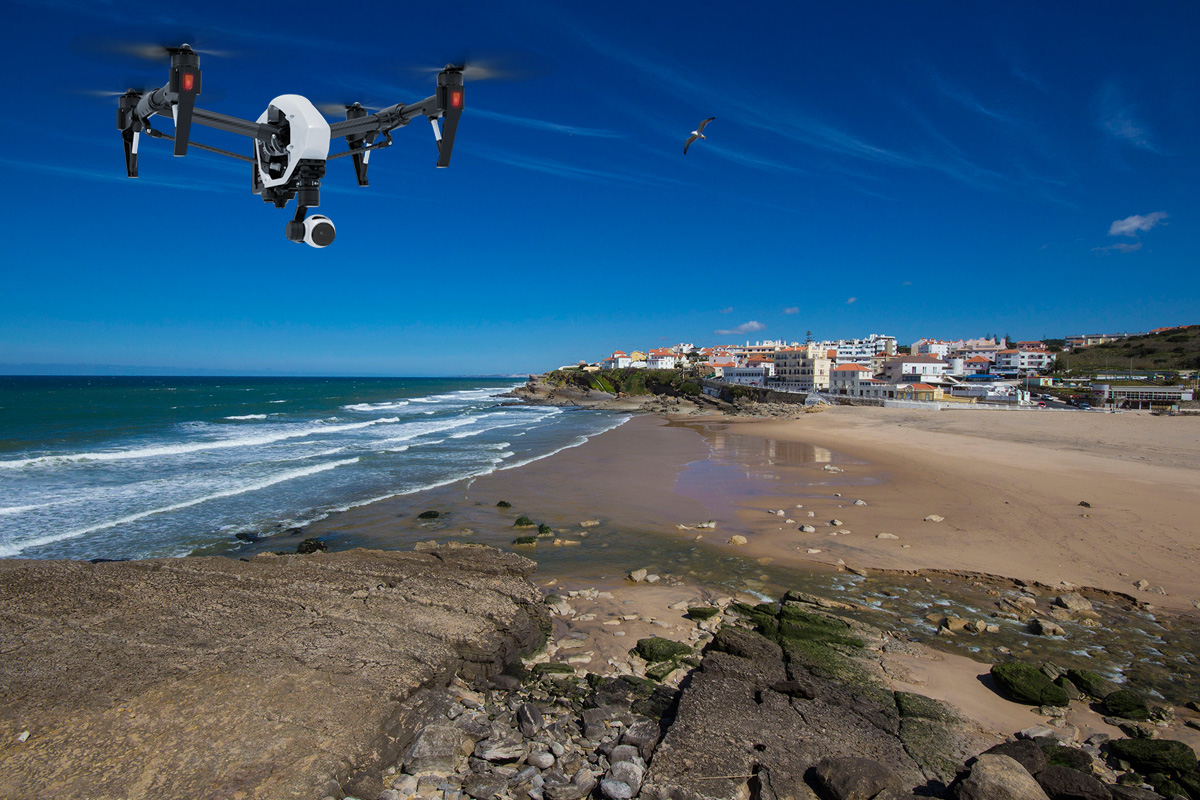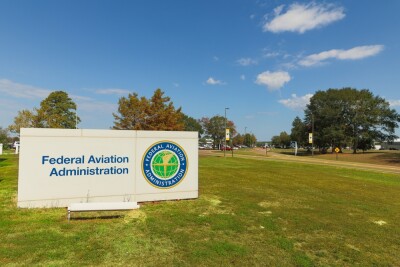A mix of Google Earth, satellite imagery and low flying UAV’s resulted in the discovery of a previously unknown monumental structure at the World Heritage site of Petra, Jordan. All around the world UAVs are helping archaeologists to rewrite what we known about the past.
Sitting at only about half a mile (800 meters) south of the center of the ancient city of Petra, hidden in plain sight for a long time, the structure now discovered is one more example of how the use of UAV’s contributes to change the way archaeologists work.
The study, published May 2016 in the Bulletin of the American Schools of Oriental Research, signed by archaeologists Sarah Parcak and Christopher A. Tuttle under the title “Hiding in Plain Sight: The Discovery of a New Monumental Structure at Petra, Jordan, Using WorldView-1 and WorldView-2 Satellite Imagery” describes the discovery and mapping of a large, previously unknown monumental structure at Petra, Jordan, using Google Earth, WorldView-1 and WorldView-2, and drones, along with visits to the area under scrutiny.
The authors, Sarah Parcak, a National Geographic fellow, and Christopher Tuttle, Executive Director of CAORC - Council of American Overseas Research Centers, write in their study that “Petra represents one of the most well-known and surveyed archaeological parks in the world; yet significant structures within range of its central city remain to be discovered. This article discusses the significance of the new discovery in relationship to Petra and its cultural landscape as well as the potential of WorldView-1, -2, and -3 satellite sensors for other archaeological projects in similar geographic areas.”
 Satellites and Indiana Jones
Satellites and Indiana Jones
The WorldView high resolution imagery used for this survey is nothing new to Sarah Parcak, as she is what can be called a space or satellite archaeologist. According to TED, Sarah Parcak is 'a modern-day Indiana Jones, armed with satellite images'. She has helped locate 17 potential pyramids in Egypt. She's also identified 3,100 forgotten settlements and 1,000 lost tombs, and made major discoveries throughout the Roman Empire and Viking world.
Winner of the 2016 TED Prize, Sarah Parcak revealed, during the annual TED Conference, on February 16, she wants to build the citizen science platform Global Xplorer, a platform that will enable anyone to discover the next hidden tomb or potential looting pit using satellite technology. The platform will double as a forum for conversation on new discoveries found, past sites saved, and the future of technology in archaeology.
In the study now published, the authors reveal that the recent discovery results from a collaborative project supported by the BBC and DigitalGlobe in 2011, which was based on the use of Google Earth, WorldView-1 (WV-1), and WorldView-2 (WV-2) satellite imagery in the survey of the central city of Petra and its environs, accompanied by ground survey to assess the satellite results. The test gave results, as, say the authors, “we have discovered multiple previously unknown features, including a monumental structure just 900 m southwest of Petra’s city center”.
New technologies to explore the past
From their experience with this project, Sarah Parcak and Christopher Tuttle believe it makes sense to say that “well known and well-surveyed archaeological sites across the globe could benefit from reassessment, beginning with Google Earth and then using the WV-1 and WV-2 satellite sensors, and suggest possible technical approaches for these data. Potential new discoveries at sites, once ground-truthed and confirmed, can be mapped in far more detail using unmanned aerial vehicles (UAVs, or drones), which can aid in their interpretation.”
The study also indicates that the aerial sensor with the greatest potential for high-resolution topographic mapping is LiDAR (Light Detection and Ranging), reflects on the limitations of its use in certain parts of the world, due to cost and military restrictions, and adds that, in the future, space-based LiDAR or smaller systems flown on UAVs can provide similar tools to archaeologists at a fraction of the cost.
In fact, although news like the one about the Petra monument make everybody look at drones in a different way, UAVs have helped to change the face of archaeology in recent years. Able to offer a stable, low altitude, slow moving platform for cameras and other instruments used to map the ground, UAVs are one of the most important tools available to study archaeology sites around the world.
Helicopters, kites and drones
While one of the easiest methods of surveying archaeological sites is from above, the cost of traditional airplane or helicopter flight made the experience prohibitive in most cases. Archaeologists have resorted to balloons or kites, which offer viable solutions, but UAVs have, in recent years, demonstrated their practicality.
With the cost of buying and operating UAVs becoming less of a problem as the market expands, even small teams and projects can use these lightweight aerial platforms for photography, video and geo-spatial data. The information gathered, offering multispectral imaging with outstanding spatial resolutions, allows to create 3D reconstructions of archaeological sites, but UAVs are also being used in long term projects of vigilance at archaeological sites.
A good example of this are the drones used to document the looting in a cemetery at Fifa, which dates from about 3600 to 3200 B.C., the Early Bronze Age. Looting, according to the article published by William Harms at the University of Chicago in 2015, began in the late 1980s, and the Jordanian government has found it difficult to curtail. Now there is a project that plans to use drones to record changes from 2013 to 2018 to determine new looting episodes and evaluate the work of the government to reduce the destruction.
UAVs have also helped archaeologists to discover structures that could not be detected from the ground and were difficult to discover with satellite imagery or from a flying aircraft. The small dimensions and low speed of the UAVs also allows its use in areas where it would be impossible to use an aircraft or even a helicopter, for reasons of safety.

Scott Ure (left) and Mike Searcy from Brigham Young University prepare a drone for flight. Credit: Todd Pitezel
Archaeology and the FAA
Although the use of UAV’s exploded in the United States, it has not always been easy to use them in archaeological projects. At the 80th Annual Meeting of the Society for American Archaeology, in San Francisco, California, in 2015, Michael Searcy, anthropology professor at the Brigham Young University, presented a conference entitled “Navigating the FAA’s Turbulent Airspace in the United States regarding UAVs” where he states that “there has been a significant increase in the use of UAVs throughout the world to aid in archaeological investigations. Unfortunately the current U.S. Federal Aviation Administration has enforced strict policies that prohibit most institutions and private firms to use these aerial vehicles. As a result archaeologists in the United States are falling behind in implementing an important tool in archaeological reconnaissance.” The presentation outlined the progress made in 2015 by the FAA to reform these regulations.
Despite whatever limitations there may be, the use of UAV’s in archaeology, both in the United States and around the world is growing each new day, as indicates the information available through multiple archaeology websites, papers and organizations. Such an example is the paper “UAVs in Historic Archaeology: Case Studies from Virginia City and Aurora, Nevada” from Adam Calkins, Graduate Student-Historical Archaeology at University of Nevada, Reno.
In the document, from 2016, the author reflects about the use of UAV’s to capture a series of high-resolution images capable of creating photogrammetric 3D models at a very low cost. Calkins says that “recently, I have undertaken two projects in Nevada that demonstrate the usefulness of UAV technology in Historic Archaeology. Using a UAV, I collected sequences of images from both Virginia City and Aurora, Nevada. Using photogrammetric software, the compiled data was turned into a series of 3D models.”
Both projects were created, continues Calkin, ”to test different applications of UAV technology in archaeology. The aim of the Virginia City project was to experiment with the viability of quickly, and inexpensively using UAVs to create 3D landscape models; while the goal of the Aurora project was to provide an avenue to explore UAV technology for site monitoring, topographic survey, and preservation. In both cases, we found that UAVs can provide a low cost alternative to gather data for archaeological investigation. These case studies provide an example for how this important technology can be employed in future archaeological studies.”
Google Earth and UAVs
When it comes to the use of UAV’s in archaeology, the sky is the limit, apparently. That’s also the title of a paper that demonstrates how international cooperation is expanding the use of these aerial systems by archaeology teams working on different projects. In “UAVs for archaeology: the sky is the limit” authors Jotka Verlee, Cornelis Stal, Britt Lonneville, Cameron McNeil and Alain De Wulf indicate that “the use of Unmanned Aerial Vehicles (UAV) has seen a tremendous development over the last decade” and that “the department of Geography of Ghent University, in Belgium, has deployed these platforms to perform high-level research on the modelling of cultural heritage. The selection of a suitable system was mainly based on compactness and flexibility in terms of transportation and deployment, as well as cost-efficiency.”
According to the authors, the platform was deployed in various international field campaigns. The first campaign’s objective was the creation of highly accurate and realistic 3D models of the archaeological site of Edzna (Mexico). This allowed the researchers to develop a systematic acquisition methodology, which was enhanced during a field campaign in Thorikos (Greece). With the deployment of the UAV, high resolution ortho-images and elevation models were generated within a limited time frame, covering a reasonable area of the site with a resolution of a few centimetres. Afterwards, the platform was equipped with an auto-pilot system, allowing the autonomous traversing of a series of waypoints. This system was successfully deployed at the archaeological site of Turpan (China). The latest field campaign was conducted at Rio Amarillo (Honduras), and comprised the creation of NGB ortho-images of various sites, in order to uncover hidden archaeological remains.”
The examples cited here are just the tip of the iceberg. In fact, every new day archaeologists are discovering new things about the past simply by using an “eye in the sky”, in a structured approach that uses all the new tools available to them: satellite imagery, Google Earth and UAVs. The new discovery in Petra just confirms that, probably, there are many other monuments from the past hidden in plain sight, waiting to be found.
A new segment of the market
Archaeology is a field where we see the need for more and more surveying and mapping services, as the new technologies in use make it more accesbile for different sized projects. UAVs can play an important role in that future too, as the examples presented here suggest. If the reassessment of well known and well-surveyed archaeological sites across the globe suggested by Sarah Parcak and Christopher Tuttle in their study goes ahead, there is a new branch of surveying and mapping services about to explore.
Furthermore, if the Global Xplorer platform aims are reached, that will mean a whole network of people around the world will look at Earth in a whole new way, using high-resolution maps, Google Earth and even drones to explore the area around their home. This will probably lead to new discoveries that will need to be further studied, using professional tools… which surveying and mapping services can provide.
Because of the specifics of the area, a drone service provider may need some time to enter this segment, which is, somehow, different from what can be considered the “traditional industrial surveying projects” – if we can talk about a tradition in this area – but the opportunities are there. Some companies have discovered the potential of this market and already have surveying and mapping for archaeology on the list of services they offer.
















Comments